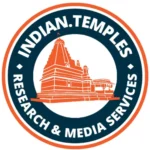Social Media Presence

33,153
Indian.Temples Research & Media Services
We is dedicated to bias free research and propoganda free information sharing.
In Hinduism, deities are worshipped in multiple forms. Among these, we also come across some therianthrope (part human part animal) forms. One of these is the Hayagriva form of Vishnu.![]()
![]() Hayagriva is worshipped as the god of knowledge and wisdom, with a human body and a horse’s head. According to legend, during the period of creation, two demons Madhu and Kaitabha stole the Vedas from Brahma, and Vishnu assumed the Hayagriva form to recover them. In another legend, Vishnu is credited for compiling the Vedas in the Hayagriva form during the period of creation.
Hayagriva is worshipped as the god of knowledge and wisdom, with a human body and a horse’s head. According to legend, during the period of creation, two demons Madhu and Kaitabha stole the Vedas from Brahma, and Vishnu assumed the Hayagriva form to recover them. In another legend, Vishnu is credited for compiling the Vedas in the Hayagriva form during the period of creation.![]()
![]() Hayagriva is almost always depicted seated, most often with his right hand either blessing the supplicant or in the vyākhyā mudrā pose of teaching. The right hand also usually holds a akṣa-mālā (rosary), indicating his identification with meditative knowledge. His left holds a book, indicating his role as a teacher. His face is always serene and peaceful.
Hayagriva is almost always depicted seated, most often with his right hand either blessing the supplicant or in the vyākhyā mudrā pose of teaching. The right hand also usually holds a akṣa-mālā (rosary), indicating his identification with meditative knowledge. His left holds a book, indicating his role as a teacher. His face is always serene and peaceful. ![]()
![]() The origin of Hayagriva worship is rather unknown, but we can see the sculptures of Hayagriva from 10th century onwards. There are a few temples of Hayagriva in the southern India, and a very beautiful temple at Hajo, in Assam.
The origin of Hayagriva worship is rather unknown, but we can see the sculptures of Hayagriva from 10th century onwards. There are a few temples of Hayagriva in the southern India, and a very beautiful temple at Hajo, in Assam.![]()
![]() 📸 Hayagriva sculpture, 10th century, discovered in Ujjain. Currently exhibited at Triveni Museum, Ujjain.
📸 Hayagriva sculpture, 10th century, discovered in Ujjain. Currently exhibited at Triveni Museum, Ujjain. ![]()
![]() #hayagriva
#hayagriva
LESSER KNOWN GEM FROM CHALUKYA ERA![]()
![]() The Kalyani Chalukyas, who ruled from Basavakalyana (then called as Kalyani) built many beautiful temples along the banks of Tungabhadra river. They are known for evolving a distinctive architectural language that formed a bridge between the Dravida and Nagara styles. But beyond the Tungabhadra region, they also built many beautiful temples in the Godavari basin of Maharashtra. One of these beautiful temples in located in Dharmapuri, in Beed district.
The Kalyani Chalukyas, who ruled from Basavakalyana (then called as Kalyani) built many beautiful temples along the banks of Tungabhadra river. They are known for evolving a distinctive architectural language that formed a bridge between the Dravida and Nagara styles. But beyond the Tungabhadra region, they also built many beautiful temples in the Godavari basin of Maharashtra. One of these beautiful temples in located in Dharmapuri, in Beed district. ![]()
![]() Dharmapuri was a buzzing trade center back in 11th century. The Kedareshwar temple was built in 12th century in this town. The temple plan consists of Garbhagriha, connected to a Mandapa through Antarala. The original temple got destroyed to a large extent due to invasions, natural calamities and years of neglect. It was recently rebuilt by Government of Maharashtra.
Dharmapuri was a buzzing trade center back in 11th century. The Kedareshwar temple was built in 12th century in this town. The temple plan consists of Garbhagriha, connected to a Mandapa through Antarala. The original temple got destroyed to a large extent due to invasions, natural calamities and years of neglect. It was recently rebuilt by Government of Maharashtra. ![]()
![]() The striking feature of the temple is the sculptural wealth it possesses. The outer niche of the Garbhagriha consists of multiple sculptures of Shiva, Parvati, Bhairava, Shakti, various incarnations of Vishnu, Yakshas and various Sursundaris.
The striking feature of the temple is the sculptural wealth it possesses. The outer niche of the Garbhagriha consists of multiple sculptures of Shiva, Parvati, Bhairava, Shakti, various incarnations of Vishnu, Yakshas and various Sursundaris. ![]()
![]() We have written a detailed article talking about the temple, and the same is available on our website indiantempless.in
We have written a detailed article talking about the temple, and the same is available on our website indiantempless.in ![]()
![]() Link also in bio
Link also in bio![]()
![]() (Chalukya Architecture, Kedareshwar temple at Dharmapuri, temple of Maharashtra)
(Chalukya Architecture, Kedareshwar temple at Dharmapuri, temple of Maharashtra)
The October 2025 edition of our monthly newsletter "The Heritage Diary" is out now. Check out at indiantempless.in/3d-flip-book/the-heritage-diary-october-2025/ . Link also in bio. ![]()
![]() #heritageDiary #heritagemagazine
#heritageDiary #heritagemagazine
SPECIAL EDITION ON SPECIAL REQUEST : LIMITED QUANTITY![]()
![]() Our recent book "The Light Of Shiva" isn't available in India in print format. But many of you requested us for the book. So we have made special edition available for India. Only 50 copies. Request your copy at forms.gle/phZyt46mWTrPxZyAA
Our recent book "The Light Of Shiva" isn't available in India in print format. But many of you requested us for the book. So we have made special edition available for India. Only 50 copies. Request your copy at forms.gle/phZyt46mWTrPxZyAA
The September 2025 issue of our monthly newsletter "The Heritage Diary" is now out. Check out at indiantempless.in/3d-flip-book/heritage-diary-september-2025/![]()
![]() Link also available in bio.
Link also available in bio.



